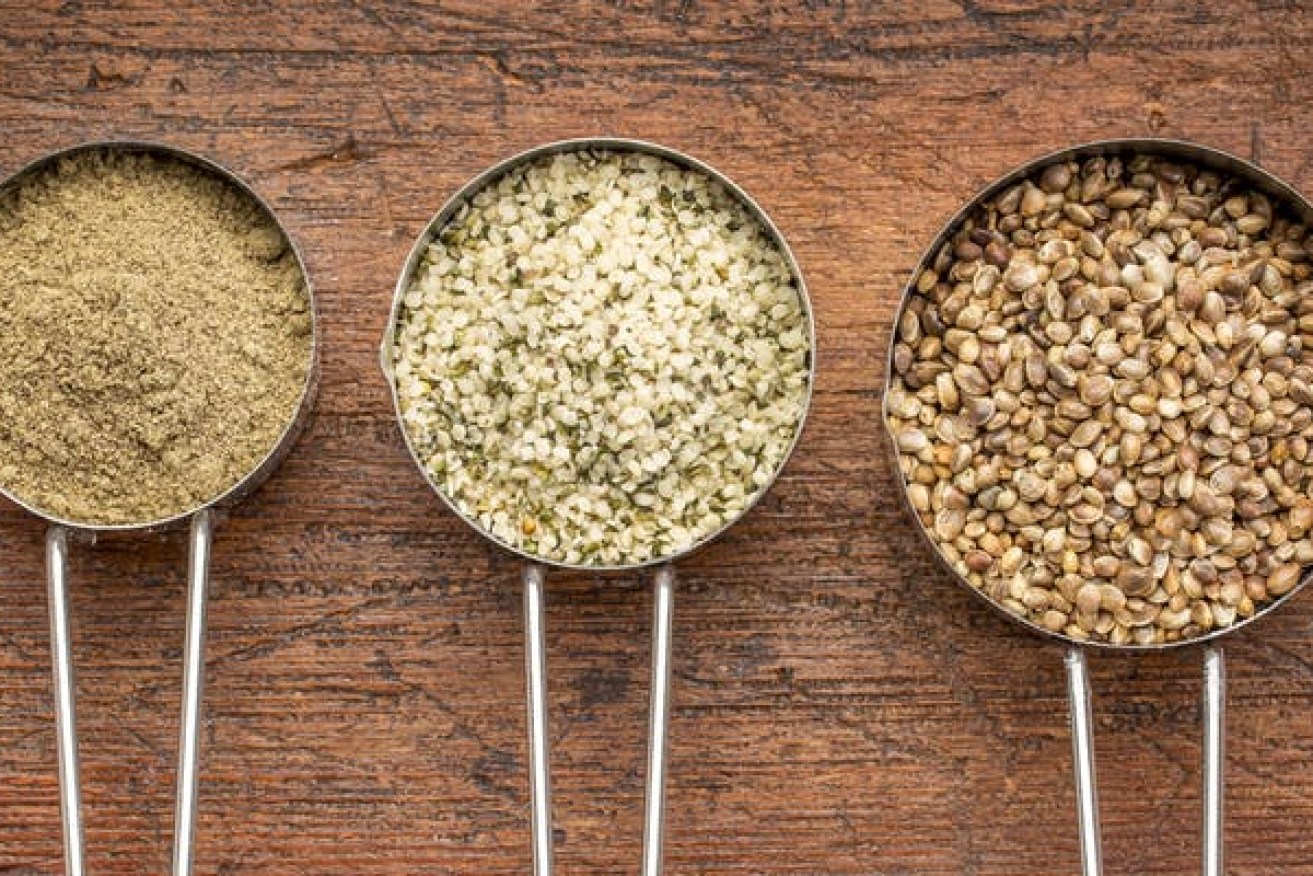Are hemp food products really good for you?
With hemp seed now able to be legally sold as food in Australia, University of Adelaide Professor of Plant Science Rachel Burton looks at the product’s nutritional value and how we might be eating it in future.

You can eat and cook with whole hemp seeds (right), hearts (centre) and ground seed (left). Photo: marekuliasz/shutterstock
Most of you know hemp, or marijuana, as a drug to be smoked. Laws restrict its use and sale in Australia and other countries.
But changes to the Food Standards Code to permit the sale of low-psychoactive hemp seed as a food became effective in Australia from this week. Jurisdictions will now need to amend respective legislation to support the legal sale of low-THC hemp seed foods.
And, despite the slightly off-putting label “industrial hemp” used to distinguish it from medical marijuana, evidence shows these seeds are very good for you.
Fast facts about edible hemp
In order to be considered a food ingredient, hemp seed has to contain less than 0.5 per cent of the psychoactive ingredient tetrahydrocannabinol (THC). It’s called low-THC hemp.
Industrial hemp naturally has low levels of THC, which is made by the plant (probably as a sunscreen or to deter insects from eating it). But levels will have to be monitored regularly. This may necessitate setting up a dedicated screening capability in some Australian states, as the crop becomes established.
Hemp seeds are actually like a little nut, with a crisp shell and a soft heart. Mostly you will find them for sale in health food shops. Typically it will be the hearts you can buy, already released from the shells; they have a mild nutty flavour.
Hemp seeds contain around 25 per cent protein, up there with soybean and even better than quinoa. Most of the essential amino acids are present, plus valuable minerals and amounts of vitamin E.
A rich source of ‘good’ oils
Hemp seed hearts are also rich in oils, and one of the best food sources with a relatively high ratio of omega 6 to omega 3 polyunsaturated fats. In hemp seeds, this ratio is around 3:1, similar to that seen in flaxseeds (also known as linseed) and olive oil.
Now we can add hemp seeds and oil to the relatively limited list of good plant sources of these fats. Nutritionists increasingly highlight the importance of balancing the amounts of omega-6 and omega-3 polyunsaturated fats in our diets.
Hemp oil can be cold-pressed out of the seeds. It is likely that the oil itself will also become more readily available as a product in Australia now the law has changed. However, this oil often contains chlorophyll, the group of pigments in plants that gives them their green colour. The oil is unstable and oxidises quite quickly. To slow this rancidity process down, the oil should be stored in a brown bottle away from direct sunlight.
Still some questions
It is less clear what types of polysaccharides or dietary fibre hemp seeds contain, and what our microbiome will make of hemp seeds when they get to the lower reaches of our digestive system. Will the microbes there be able to ferment this seed material?
Fermentation of foods in the lower intestine can produce protective anti-inflammatory byproducts. Hemp may be able to contribute to this.
Or maybe the seeds will just provide dietary bulk that helps move food through our digestive systems and prevents constipation (also useful from a health perspective).
We don’t really know the answers to these questions yet, but one thing we do know is that if we remove the shell or hull, we are taking away much of the fibre and some of the minerals.
Australia is late to the party
Hemp has been around for centuries and the seed has been freely available to eat in countries such as the US, Canada and the UK for many years. But its food value has only recently started to be appreciated.
It’s now finding its way into breads, breakfast cereals and other baked goods with increasing regularity.

Chocolate, blueberry and hemp zucchini bread. Photo: reid-bee/flickr
It will be interesting to monitor its uptake in Australia and New Zealand, particularly in comparison to other seeds like chia and quinoa.
The food use of industrial hemp is by no means the whole story though, and this crop is incredibly versatile. Plants can be grown for organic animal feed, for fibre to go into paper, and fabric or soundproofing for cars, while the the residues can be used as a biofuel feedstock to power our vehicles. Hemp could even be “torrefied” (roasted like coffee beans) to make a brown coal equivalent, or converted to provide essential high value chemicals.
Rachel Burton is Node leader of the ARC Centre of Excellence in Plant Cell Walls and Professor of Plant Science at the University of Adelaide. This article was originally published on The Conversation.




